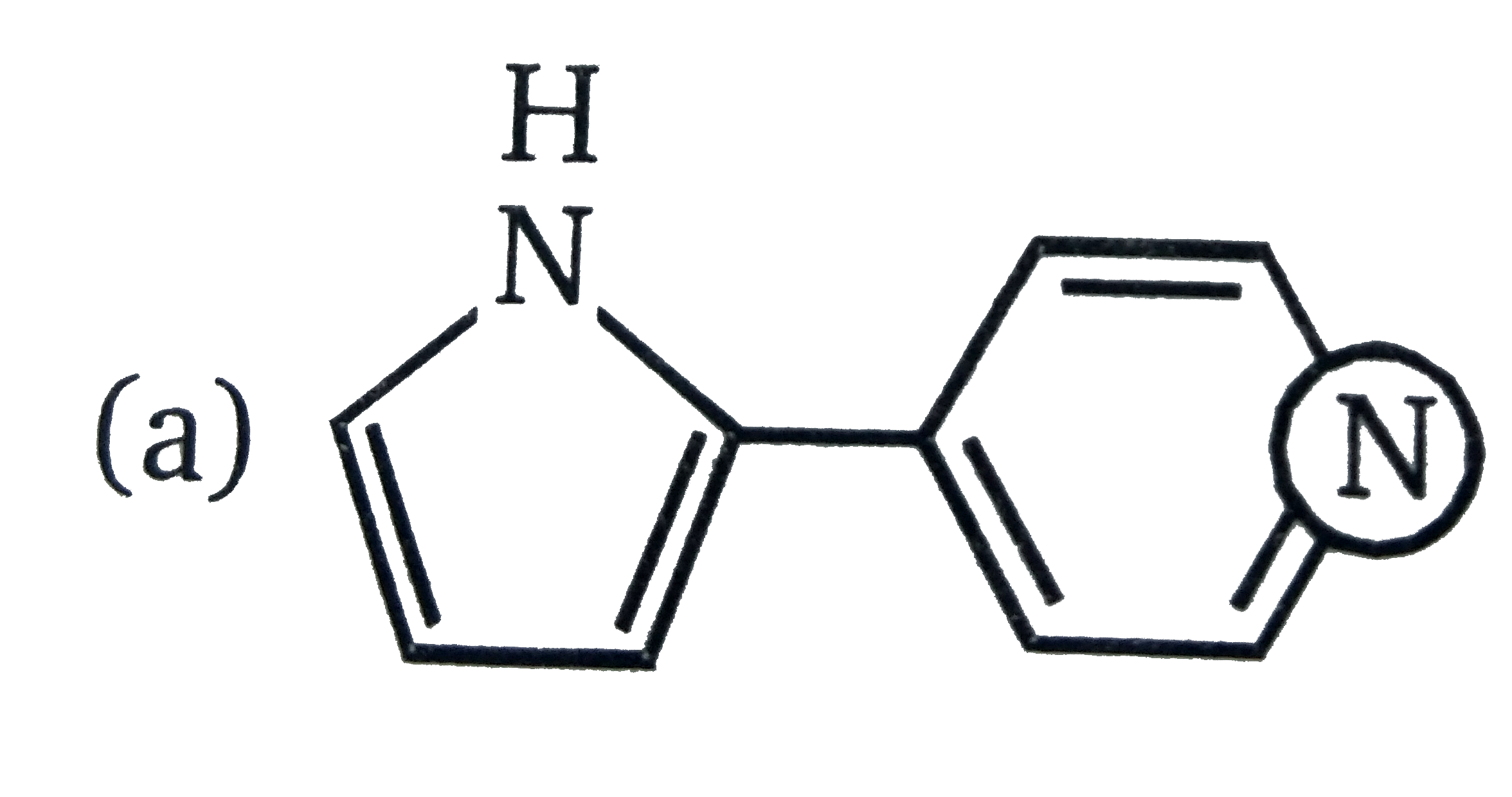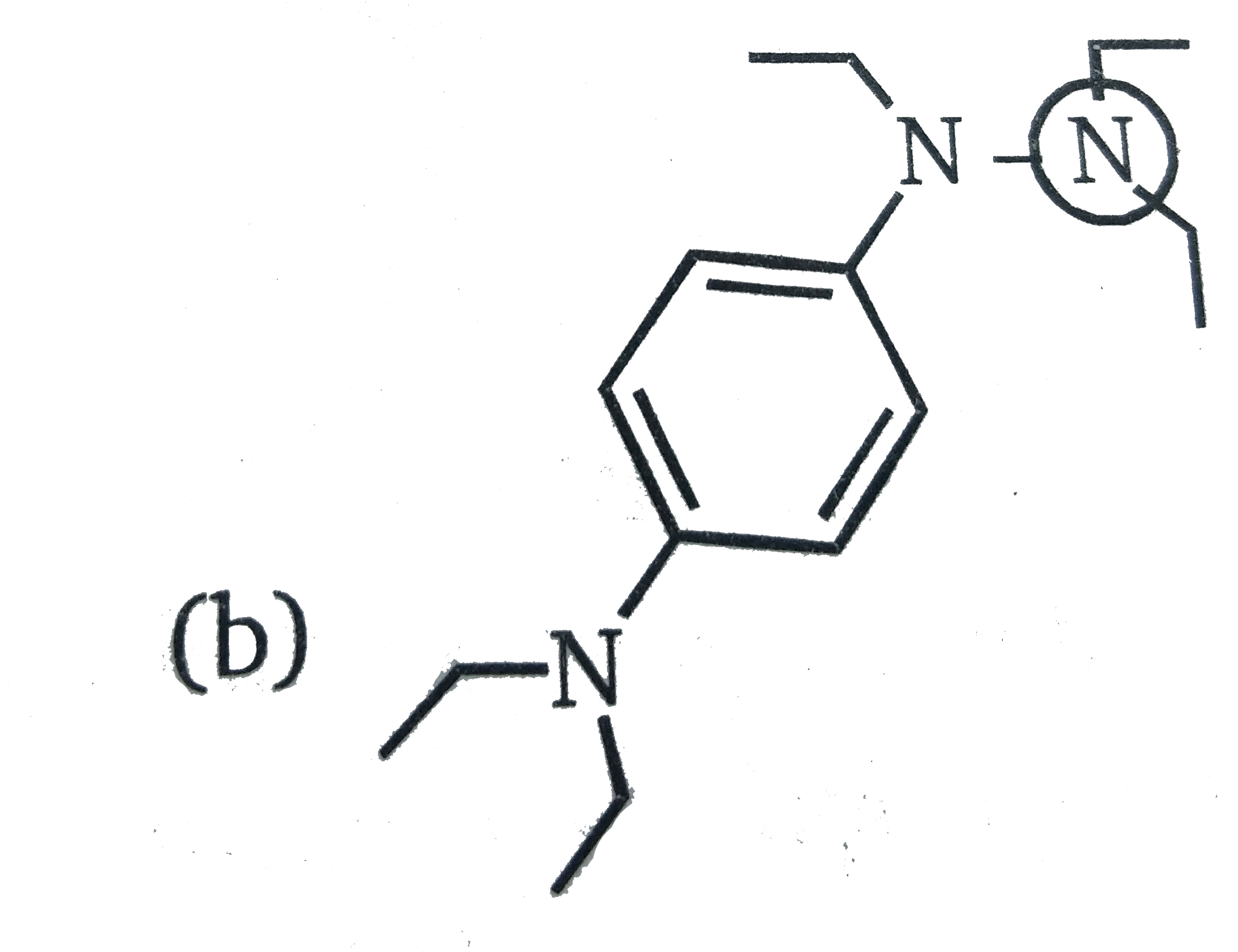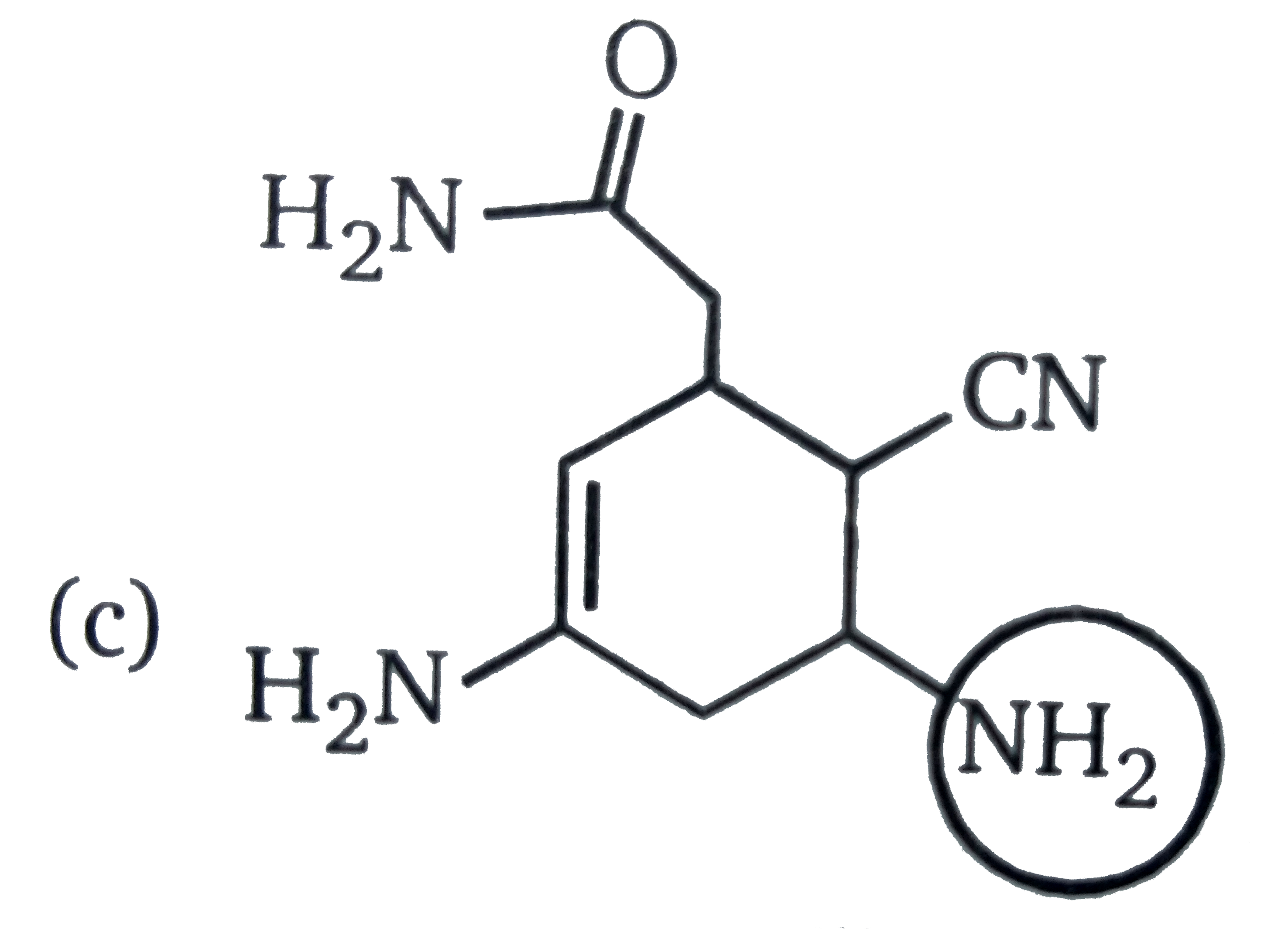Circle represents most basic atoms in these moelcule. Which of the following is correct representation ?



All of these
The correct Answer is:D
To determine which nitrogen atoms in the given molecules are the most basic, we need to analyze the lone pairs of electrons on the nitrogen atoms and their involvement in resonance or aromaticity. Here’s a step-by-step breakdown of the solution:
Step 1: Identify the Nitrogen Atoms
- Look at the given molecules and identify all the nitrogen atoms present in each structure.
Hint: Focus on the atoms that are explicitly labeled as nitrogen in the molecular structures.
Step 2: Analyze the Lone Pairs
- For each nitrogen atom, assess whether the lone pair of electrons is free or involved in resonance or aromaticity.
- If the lone pair is involved in resonance or aromaticity, it is delocalized and less available for donation, which decreases basicity.
Hint: Remember that a free lone pair can act as a Bronsted base, while a delocalized lone pair cannot.
Step 3: Evaluate Resonance and Aromaticity
- For nitrogen atoms involved in aromatic systems, the lone pair is usually fully delocalized, which significantly reduces basicity.
- For nitrogen atoms involved in resonance but not aromaticity, the lone pair may be partially delocalized, which still reduces basicity but not as much as complete delocalization.
Hint: Look for structures that show resonance forms and determine how the lone pair is affected.
Step 4: Compare Basic Strengths
- Compare the nitrogen atoms based on the availability of their lone pairs. The more free the lone pair, the stronger the base.
- Consider the hybridization of the nitrogen atoms as well. The more s character in the hybridization, the less basic the nitrogen atom will be.
Hint: Recall that sp³ hybridized nitrogen (with 25% s character) is generally more basic than sp² (with 33% s character) or sp (with 50% s character) hybridized nitrogen.
Step 5: Conclusion
- Based on the analysis, determine which nitrogen atoms have the most free lone pairs and thus are the most basic.
- If multiple nitrogen atoms show similar characteristics, they can all be considered correct options.
Hint: Summarize your findings by identifying which nitrogen atoms are the most basic based on your analysis.
Final Answer
After analyzing the nitrogen atoms in the given molecules, we conclude that the nitrogen atom with the most free lone pair is the most basic. If multiple options present nitrogen atoms with free lone pairs, then they are all correct representations of basic atoms.
- Look at the given molecules and identify all the nitrogen atoms present in each structure.
- For each nitrogen atom, assess whether the lone pair of electrons is free or involved in resonance or aromaticity.
- If the lone pair is involved in resonance or aromaticity, it is delocalized and less available for donation, which decreases basicity.
- For nitrogen atoms involved in aromatic systems, the lone pair is usually fully delocalized, which significantly reduces basicity.
- For nitrogen atoms involved in resonance but not aromaticity, the lone pair may be partially delocalized, which still reduces basicity but not as much as complete delocalization.
- Compare the nitrogen atoms based on the availability of their lone pairs. The more free the lone pair, the stronger the base.
- Consider the hybridization of the nitrogen atoms as well. The more s character in the hybridization, the less basic the nitrogen atom will be.
- Based on the analysis, determine which nitrogen atoms have the most free lone pairs and thus are the most basic.
- If multiple nitrogen atoms show similar characteristics, they can all be considered correct options.
After analyzing the nitrogen atoms in the given molecules, we conclude that the nitrogen atom with the most free lone pair is the most basic. If multiple options present nitrogen atoms with free lone pairs, then they are all correct representations of basic atoms.
Topper's Solved these Questions
- BOOK - MS CHOUHANCHAPTER - GENERAL ORGANIC CHEMISTRYEXERCISE - LEVEL- 11videos
GENERAL ORGANIC CHEMISTRY
- BOOK - MS CHOUHANCHAPTER - FAMILIES OF CARBON COMPOUNDS: FUNCTIONAL GROUPS AND INTERMOLECULAR FORCES EXERCISE - ADDITIONAL OBJECTIVE QUESTIONS ( Matrix Match Type )4videos
FAMILIES OF CARBON COMPOUNDS: FUNCTIONAL GROUPS AND INTERMOLECULAR FORCES
- BOOK - MS CHOUHANCHAPTER - GRIGNARD REAGENTSEXERCISE - Level 1 (Q.61 To Q.66)1videos
GRIGNARD REAGENTS
Similar Questions
Knowledge Check
- Question 1 - Select One
Circle represent most acidic hydrogens int these molecules. Which of the following is correct representation ?
A B
B C
C DAll of these
DAll of these - Question 2 - Select One
Which of the following is a correct representation of Cl−?
A B
B C
C D
D
- Question 3 - Select One
Which of the following is not correct representation of H-bond?
A B
B C
C DAll are correct
DAll are correct

